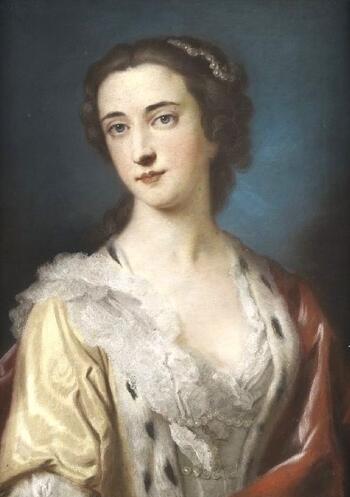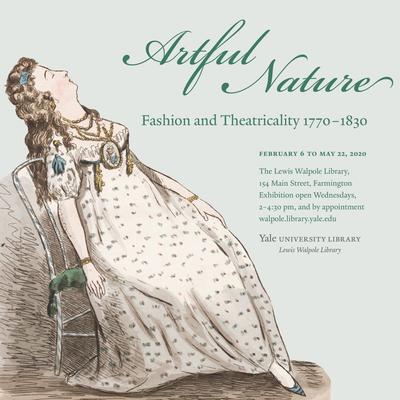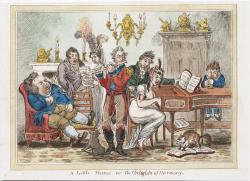Past Exhibitions
“Seen with Great Delight”: Spectacle in Georgian London (2025)
The Paradox of Pearls: Accessorizing Identities in the Eighteenth Century (2024-2025)
Is It Any Good? Prints, Drawings, and Paintings at the Lewis Walpole Library (2024)
Knight Errant of the Distressed (2023)
Doing Good by Stealth: The Philanthropy and Service of Annie Burr Lewis (2021)
Artful Nature: Fashion and Theatricality, 1770-1830 (2020)
Rescuing Horace Walpole: The Achievement of W.S. Lewis (2019)
Trial by Media: The Queen Caroline Affair (2019)
Global Encounters and the Archives (2017)
The Land without Music: Satirizing Song in Eighteenth-Century England (2017)
Character Mongers, or, Trading in People on Paper in the Long 18th Century (2016)
James Gillray’s Hogarthian Progresses (2016)
Bawdy Bodies: Satires of Unruly Women (2015)
Prospects of Empire: Slavery and Ecology in Eighteenth-Century Atlantic Britain (2014)
A Collection’s Progress: The Lewis Walpole Library, 2000-2014 (2014)
Emma Hamilton Dancing (2013)
“In the Midst of the Jovial Crowd”: Young James Boswell in London, 1762-1763 (2013)
Dancing on a Sunny Plain: the Life of Annie Burr Auchincloss Lewis (2012)
“The God of Our Idolatry”: Garrick and Shakespeare (2012)
Sacred Satire: Lampooning Religious Belief in Eighteenth-Century Britain (2011)
Illustrious Heads: Portrait Prints as History (2010)
Collection Highlights: Prints, Drawings, and Illustrated Books (2010)

Samuel Johnson defined “spectacle” in 1755 as “a show; a gazing stock; any thing exhibited to the view as eminently remarkable.” This exhibition will explore the range of spectacular shows that were offered to the fee-paying public in Georgian London, from exhibitions of paintings, to scientific demonstrations, to the display of wondrous animals. These shows were such an integral part of the visual culture that Horace Walpole complained in 1770, “The rage to see these exhibitions is so great, that sometimes one cannot pass through the streets where they are … it is incredible what sums are raised by mere exhibitions of anything … to enter at which you pay a shilling or half a crown.”
The exhibition will primarily focus on images drawn from the extensive collections at the Lewis Walpole Library that announce, depict and satirise what people paid to gaze at. It will consider how derogatory ideas about spectacle were expressed in caricatures and political discourse. Admission charges made shows less accessible for some, but spectacle blurred the line between high and low culture, fine art and performance. Who ultimately judged what was “eminently remarkable” in an unashamedly commercial context? At the heart of this equation were the spectators, united by the impulse of curiosity but far from homogenous, and at times, making a spectacle of themselves.
The Paradox of Pearls: Accessorizing Identities in the Eighteenth Century
Associated programming:
Nov 16 LWL-Farmington Libraries Talk at the Lewis Walpole Library: ”The Paradox of Pearls: Accessorizing Identities in the Eighteenth Century”with exhibition curator Laura Engel, Duquesne University. Details and link to register.
Is It Any Good? Prints, Drawings, and Paintings at the Lewis Walpole Library
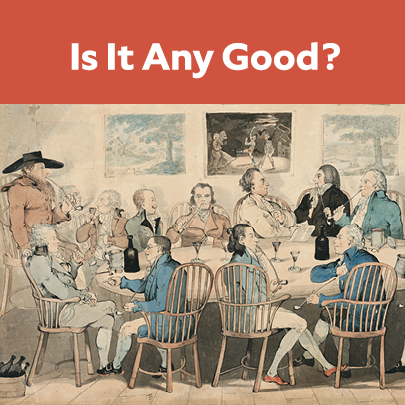
This exhibition will also be available online. View online exhibition (coming soon)
View Exhibition Brochure (coming soon)
Knight Errant of the Distressed: Horace Walpole and Philanthropy in Eighteenth-Century London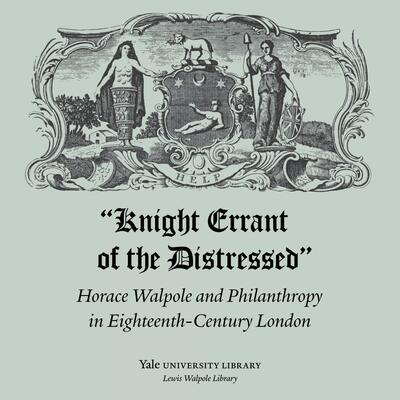
Curated by Dr. Andrew Rudd, Senior Lecturer, English Department, University of Exeter
Was Walpole really a ‘miser’, as William Hazlitt claimed? This exhibition uses images, manuscripts, artefacts and extracts from publications and correspondence to situate Walpole within the burgeoning philanthropic culture of his age. It will reveal Walpole’s secret giving to prisoners and other good causes and examine the principles which underlay his philanthropy. A main aim of the exhibition will be to stimulate discussion about philanthropy today. Walpole wrote that ‘if it ever is justifiable to good sense to act romantically, it is by being the knights errant of the distressed’. The exhibition will unravel contradictions in Walpole’s approach to philanthropy, illuminate the importance of charitable giving in the eighteenth century, and open up for the first time this most intimate, often hidden, aspect of Walpole’s life.
This exhibition is also available online. View online exhibition
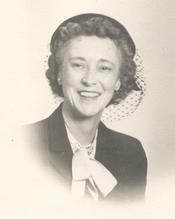
Doing Good by Stealth: The Philanthropy and Service of Annie Burr Lewis
Curated by Susan Odell Walker, Head of Public Services
“A doer of good by stealth, she was active in innumerable good causes and it is with wistful melancholy that her friends now contemplate a Farmington bereft of her quiet and queenly radiance.” Sydney Castle Roberts, The Times (London), 16 May 1959.
Annie Burr Auchincloss Lewis (1902-1959) lived a life of service and philanthropy and left a mark on her community and the causes to which she devoted her efforts. She was a woman of independent means with a commitment to do good to causes dear to her, albeit quietly. She is best known for her support of her husband Wilmarth Sheldon Lewis (1895-1979), Yale class of 1918, co-founder of the Lewis Walpole Library, executive editor of the Yale Edition of Horace Walpole’s Correspondence, and a prominent member of the Yale Corporation. As described by Louis Auchincloss, “Lefty’s whole life was dedicated to Walpole and would have been impossible without the money that Annie Burr lovingly and happily poured into his project. They worked together in everything and brought the eighteenth century to life for innumerable students and readers in their beautiful house in Farmington, now part of the university.”
Far less has been written about her independent philanthropic activities, and indeed far fewer written records survive. A granddaughter of O.B. Jennings, whose fortune was founded on Standard Oil, Annie Burr grew up in a world where strong women in her circle set examples of civic engagement, including charitable fundraising and other philanthropic contributions. Throughout her life, Annie Burr kept the close friendships she had formed during her days as a debutante in New York and a student at Miss Porter’s School in Farmington, Connecticut, ties that were further strengthened when some of these friends married Yale men, as she had done in 1928 when she wed Lewis. Shaped by her family’s history of philanthropic endeavors, her personal interests and interpersonal connections influenced her choice of causes to support.
This exhibition explores the impact Annie Burr Lewis had during her lifetime and the legacy of her service and contributions to organizations involved in education, historic preservation, and nursing. These interests often overlapped in her involvement at Yale University, in Farmington, Connecticut, elsewhere in New England, and nationally. Annie Burr Lewis’s undeniably privileged upbringing positioned her to take a leading role in philanthropic endeavors. That she followed the path laid out for her by family and societal tradition may not be remarkable. But the direction that path took, the financial autonomy she enjoyed, and the lasting contribution to her world and the communities of today make her otherwise typical journey uniquely hers.
All items in the exhibition are in the archives of the Lewis Walpole Library in Farmington. Most can be found in the Annie Burr Lewis Papers.
Videorecording of Annie Burr Lewis’s Legacy of Philanthropy and Service in Farmington and Beyond talk by exhibition curator Susan Odell Walker for joint Lewis Walpole Library-Farmington Libraries series of exhibition-related lectures. December 2021.
Artful Nature: Fashion and Theatricality, 1770-1830
Lewis Walpole Library
Curated by Laura Engel, Professor of English, Duquesne University
And
Amelia Rauser, Professor of Art History, Franklin & Marshall College
Between 1770 and 1830, both fashionable dress and theatrical practice underwent dramatic changes in an attempt to become more “natural.” And yet this desire was widely recognized as paradoxical, since both fashion and the theater were longstanding tropes of artifice. In this exhibition, we examine this paradox of “artful nature” through the changing conception of theatricality during these decades, as mirrored and expressed in fashionable dress. Theater and performance practices in the late eighteenth-century, including the vogue for private theatricals, reinforced the blurred lines between the theater and everyday life. Classical sculpture became a reference point for women, as its artistic excellence was acclaimed precisely because it seemed so “natural.” But when actresses, dancers, painters, or just regular fashionistas posed themselves as classical statues come to life, they acted as both Pygmalion and Galatea, both the genius artist and the living artwork. “Artful Nature” refers simultaneously to the theatricality and deception typically attributed to fashionable women in the late eighteenth century, and at the same time to the potential survival strategies employed by women artists, authors, and actresses to craft their own parts. View online exhibit.
The exhibition was initially on view at the Lewis Walpole Library exhibition gallery in February and early March 2020. View a guided tour of the exhibit.
A Keynote Lecture Fashionable Enemies: Glamour as Argument, 1770-1830 by Joseph Roach took place on February 6, 2020 in conjuction with the exhibit. More information about the Keynote Lecture
Amelia Rauser presented a lecture online Black Bodies and Neoclassical Whiteness in the Age of Undress in connection with the exhibition.
Review: Zara Kesterton (2021) ‘Artful Nature: Fashion and Theatricality 1770–1830’, Lewis Walpole Library, Farmington, USA, 6 February–13 March 2020, Textile History, 52:1-2, 191-195, DOI: 10.1080/00404969.2021.1947590
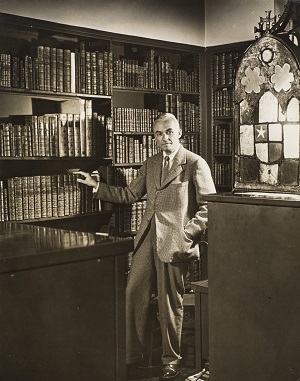
Rescuing Horace Walpole: The Achievement of W.S. Lewis
September 20, 2019 to January 24, 2020
Wilmarth S. “Lefty” Lewis (Yale Class of 1918) devoted the better part of his life to building the world’s greatest collection relating to Horace Walpole (1717–97), the British writer, collector and historian. He also championed Walpole’s importance as a figure in English eighteenth-century life, doing so most effectively as general editor and guiding spirit of the Yale Edition of Horace Walpole’s Correspondence (Yale University Press, 1937-83), whose 48 volumes are widely acknowledged to this day as a model of scholarship in historical editing.
This fall’s exhibition, Rescuing Horace Walpole: The Achievement of W.S. Lewis, pays tribute to Lewis’s life and legacy as a scholar-collector, on the fortieth anniversary of his bequest of the Lewis Walpole Library to his alma mater, Yale University. Drawing heavily on the recently cataloged Lewis archives, the exhibition shows how the total dedication of the collector resulted in a collection of extraordinary range and depth, and expressed itself in some surprising ways. It also evolved into a monumental achievement of scholarship in the Yale-Walpole edition and, in the process, transformed perceptions of Walpole and his age. View the online exhibit
A related symposium, Scholarly Editing of Literary Texts from the Long Eighteenth Century , on September 21st, in New Haven, will explore the past, present, and future of scholarly editions of the collected works and correspondences of early modern British writers, ranging from the Yale Horace Walpole (1717-1797) and Samuel Johnson (1709-1784) editions, via the Burney and Boswell papers to new editions now being planned for Alexander Pope (1688-1744) and Aphra Behn (1640?-1689). For further information please contact the Library.
Curator Stephen Clarke gave a talk Rescuing Horace Walpole and Re-Discovering W.S. Lewis: a Collector Revealed, on Monday, October 28, 2019, 7 pm, at the Lewis Walpole Library. More information about this talk.
Trial by Media: The Queen Caroline Affair
*On view at the Lillian Goldman Law Library, Yale Law School, New Haven, CT
September 9 to December 19, 2019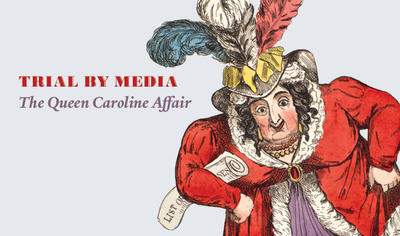
Curated by
Cynthia Roman, Curator of Prints, Drawings and Paintings at the Lewis Walpole Library
and
Mike Widener Rare Book Librarian, Lillian Goldman Law Library
Trial by Media: The Queen Caroline Affair exhibition marks the bicentennial of the Queen Caroline divorce proceedings and focuses on the prolific media coverage around the trial. The trial is famous among cultural historians as a media event; in law it is remembered for Lord Brougham’s argument that a lawyer’s only duty is “to save that client by all means and expedients.”
There will be an online component following the physical exhibition. For the online exhibition, Cynthia Roman and Mike Widener have invited several scholars from diverse disciplines, at Yale and beyond, including many former research fellows, to contribute a short note focused on an object or group of objects of their choice from the Queen Caroline-related collections. View the online exhibit
Trial by Media: The Queen Caroline Affair will enable visitors to explore the rich resources at Yale on the topic of Queen Caroline and many scholarly perspectives from cultural and legal historians on this fascinating story.
Global Encounters and the Archives: Britain’s Empire in the Age of Horace Walpole
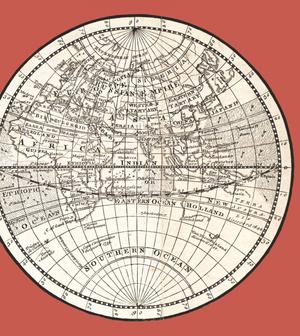 October 20, 2017 - March 2, 2018
October 20, 2017 - March 2, 2018
Curated by:
Justin Brooks, Doctoral Candidate in History, Yale University
Heather V. Vermeulen, , Ph.D., Lecturer in African American Studies, Yale University
Steve Pincus, Bradford Durfee Professor of History, Yale University
Cynthia Roman, Curator of Prints, Drawings, and Paintings, The Lewis Walpole Library
As part of the year-long celebrations of the 300th anniversary of Horace Walpole’s birth, Global Encounters and the Archives: Britain’s Empire in the Age of Horace Walpole draws on the Lewis Walpole Library’s rich collections to bring Walpole’s global interests to light. As befitting the son of a prime minister (Sir Robert Walpole), the nephew of the auditor-general of the Revenue of America (Horatio Walpole), and the close friend of a secretary of state (Henry Seymour Conway) who oversaw important imperial affairs, Horace Walpole well understood the partisan conflicts that helped shape the British Empires. A lively collaboration between the Lewis Walpole Library and Yale faculty and graduate students, this exhibition takes full advantage of the diverse range of archival resources and special collections held by the library, including manuscripts, printed texts and graphic images in presenting conflicting visions of empire through the domains of political economy, diplomacy, slavery and indigenous peoples.
In addition to the physical exhibition, the library has also created an online version. This online exhibit includes images of the manuscripts, rare books, pamphlets, and prints featured in the exhibit together with label texts and essays written by the curators of the physical exhibition. View the online exhibit
In association with this exhibition, the library will sponsor a two-day conference in New Haven on February 9-10, 2018. The conference papers will present new archival-based research on Britain’s global empire in the long eighteenth century.
The Land without Music: Satirizing Song in Eighteenth-Century England
March 1 through September 29, 2017
Curated by
Amy Dunagin
Postdoctoral Associate, European Studies Council, Yale University, and Managing Editor, Eighteenth-Century Studies
Music pervaded public and private spaces in eighteenth- and nineteenth-century England; yet, in 1904, German critic Oscar Adolf Hermann Schmitz, heightening long-standing aspersions, dismissed England as a “land without music.” This unflattering epithet pointed to England’s meager contributions to the western musical canon during the eighteenth and nineteenth centuries—no English Gluck, Mozart, or Verdi; no English operatic or symphonic tradition that could rival those that flourished on the continent. The English, critics like Schmitz suggested, were importers rather than producers—tasteless consumers and dilettantes rather than discerning, proficient practitioners. This view did not originate with continental nationalists; in the eighteenth century the English often presented themselves as uniquely unmusical in print and in visual satire. At once self-effacing and boastful, this representation asserted a national character too sensible, too chaste, too sober to permit the excesses of musical genius. Bringing together satirical prints and documents pertaining to English music makers and listeners, this exhibition explores English attitudes toward music as lascivious, feminine, foreign, frivolous, and distinctly un-English.
Character Mongers, or, Trading in People on Paper in the Long 18th Century
October 10, 2016 through January 27, 2017
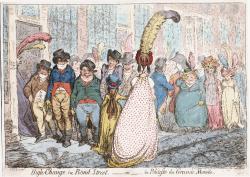
Co-curated by
Professor Rachel Brownstein, Professor Emerita, Brooklyn College and The Graduate Center, CUNY
and
Dr. Leigh-Michil George, Instructor, Pasadena City College
In the course of the long eighteenth century—the Age of Caricature, and of The Rise of the Novel—the British reading public perfected the pastime of savoring characters. In a flourishing print culture, buying and selling likenesses of people and types became a business—and arguably an art. Real and imaginary characters—actual and fictional people—were put on paper by writers and graphic artists, and performed onstage and off. The exigencies of narrative, performance, and indeed of community conspired to inform views of other people—friend and foe, fat and thin—as tellingly, characters. “For what do we live,” Jane Austen’s Mr. Bennet would ask rhetorically in 1813, “but to make sport for our neighbours and laugh at them in our turn?”
This exhibit will feature images by William Hogarth, James Gillray, Thomas Rowlandson, Thomas Patch, Edward Francis Burney, Francis Grose, and G.M. Woodward, excerpts from novels by Jane Austen, Henry Fielding, and Laurence Sterne, and examples of graphic collections published by Matthew and Mary Darly and Thomas Tegg that marketed caricature as entertainment.
James Gillray’s Hogarthian Progresses
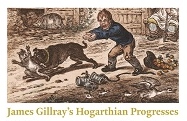 April 6 through September 16, 2016
April 6 through September 16, 2016
Curated by
Cynthia Roman
Curator of Prints, Drawings, and Paintings, the Lewis Walpole Library
Sequential narration in satiric prints is most famously associated with the “modern moral subjects” of William Hogarth (1697–1764): Harlot’s Progress (1732), A Rake’s Progress (1735), Marriage A-la-Mode (1745), andIndustry and Idleness (1747) among others. Less well-known is the broad spectrum of legacy “progresses” produced by subsequent generations drawing both on Hogarth’s narrative strategies and his iconic motifs. James Gillray (1756–1815), celebrated for his innovative single-plate satires, was also among the most accomplished printmakers to adopt Hogarthian sequential narration even as he transformed it according to his unique vision. This exhibition presents a number of Gillray’s Hogarthian progresses alongside some selected prints by Hogarth himself.
Bawdy Bodies: Satires of Unruly Women
September 24, 2015 through February 26, 2016
Co-curated by
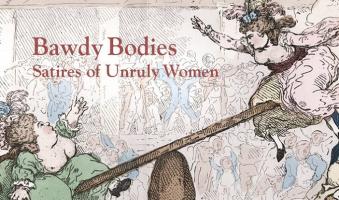 Hope Saska, Curator of Collections and Exhibitions, University of Colorado Art Museum
Hope Saska, Curator of Collections and Exhibitions, University of Colorado Art Museum
and
Cynthia Roman, Curator of Prints, Drawings, and Paintings, the Lewis Walpole Library with contributions by Jill Campbell (Department of English, Yale University)
Characterized by comically grotesque figures performing lewd and vulgar actions, bawdy humor provided a poignant vehicle to target a variety of political and social issues in eighteenth-century Britain. Bawdy Bodies: Satires of Unruly Women explores the deployment of this humorous but derisive strategy toward the regulation of female behavior. The exhibition presents satirical images of women from a range of subject categories including the royal family, aging members of fashionable society, disparaged mothers, political activists, gamblers, medical wonders, artists, performers, and intellectuals.
Prospects of Empire: Slavery and Ecology in Eighteenth-Century Atlantic Britain
November 17, 2014 - May 1, 2015
Curated by
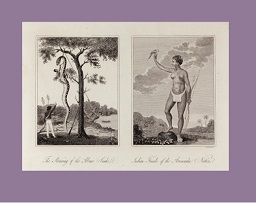 Heather V. Vermeulen, Doctoral Candidate in African American Studies and American Studies, Yale University
Heather V. Vermeulen, Doctoral Candidate in African American Studies and American Studies, Yale University
and
Hazel V. Carby, Charles C. & Dorathea S. Dilley Professor of African American Studies and Professor of American Studies, Yale University
“Prospects of Empire: Slavery and Ecology in Eighteenth-Century Atlantic Britain” explores the notion of empire’s “prospects”—its gaze upon bodies and landscapes, its speculations and desires, its endeavors to capitalize upon seized land and labor, as well as its failures to manage enslaved persons and unruly colonial ecologies. It reads latent anxieties in the policing of bodies and borders, both in the colonies and in the metropole, and examines the forces that empire mustered to curtail perceived threats to its regimes of power and knowledge. In addition to the focus on material from the long eighteenth century, the exhibition features a selection of four lithographs from Joscelyn Gardner’s series Creole Portraits III: “bringing down the flowers” (2009-11), a recent joint acquisition by the Yale Center for British Art and the Yale University Art Gallery. Gardner’s work mines the eighteenth-century Jamaica archive of white English immigrant, overseer, slaveowner, and pen-keeper Thomas Thistlewood, one of whose diaries is on loan from the Beinecke.
A Collection’s Progress: The Lewis Walpole Library, 2000-2014
April 14 - October 3, 2014
Curated by
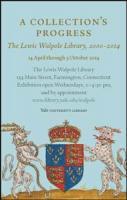 Margaret K. Powell, W.S. Lewis Librarian and Executive Director, the Lewis Walpole Library
Margaret K. Powell, W.S. Lewis Librarian and Executive Director, the Lewis Walpole Library
When Wilmarth Sheldon Lewis left his library to Yale in 1979 Lewis thought of his gift not as a finished monument but as a living thing that required growth and change lest it become, in his words, “static and moldy.” The exhibition presents materials selected from the LWL’s collecting successes of the last fourteen years. Together the objects on display argue forcefully for the Library’s conquest of stasis and mold, and each speaks eloquently of another time, its politics and conflicts, its arts, fashions, and pastimes.
October 16, 2013 - April 4, 2014
Curated by
John Cooper , 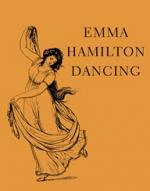 Clare-Mellon Fellow in the History of Art, Yale University
Clare-Mellon Fellow in the History of Art, Yale University
In 1794 the dancing and Attitudes, or expressive postures, performed by Emma Hamilton (1761?-1815) were rendered in twelve neoclassical images engraved by Thomas Piroli after drawings by Frederick Rehberg. After the death of her husband Sir William Hamilton in 1803 and that of her lover Admiral Lord Nelson in 1805, Emma Hamilton and her Attitudes were the subject of a second, ‘enlarged’ edition of parodies by James Gillray in 1807 in which her person was dramatically inflated. Emma Hamilton Dancing displays these two editions beside each other for the first time.
Emma Hamilton Dancing presents these Attitudes among images of the tarantella, the waltz, minuet, cotillion, and quadrille as well as prints of ballet dancing in the age of the ballet d’action and works on the theory and practice of dancing. In this context, the Attitudes are seen moving within the world of dancing in ballrooms and onstage in Europe during the era of revolution in America, France and the Kingdom of Naples.
Emma Hamilton Dancing: The Attitudes Performed
“In the Midst of the Jovial Crowd”: Young James Boswell in London, 1762–1763
April - October 4, 2013
Curated by
James Caudle, The Associate Editor, Yale Edition of the Private Papers of James Boswell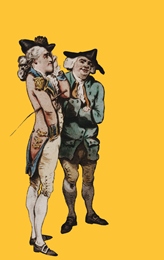
In autumn 1762, the ambitious, clever, jovial, and bumptious twenty-two-year-old Scotsman James Boswell traveled south from Edinburgh to London to seek his fortune in the capital. In his lively journal, he recorded his extraordinarily action-packed eight months there, and his efforts to become a permanent Londoner.
London in the Sixties (the 1760s) was a thrilling place, full of pleasures and dangers, wisdom and folly, high life and low life. This exhibition aspires to place visitors ‘in the midst of the jovial crowd’ in which young James Boswell felt so alive and happy. Prints by Hogarth and Rowlandson and others, and rare books and ballads, will bring to life the current events, everyday social life, and personalities celebrated in Boswell’s London Journal, unpublished until 1950, but now one of the best-loved works of eighteenth-century life-writing.
Dancing on a Sunny Plain: the Life of Annie Burr Auchincloss Lewis
October 29, 2012 – March 22, 2013
Curated by
Susan Odell Walker, Head of Public Services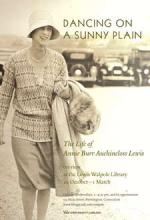
Celebrating their twentieth anniversary, Annie Burr Auchincloss Lewis (1902 – 1959) used Horace Walpole’s words to describe her partnership with Wilmarth Sheldon Lewis: “Life seems to me as if we were dancing on a sunny plain.” Annie Burr certainly shared her husband’s informed enthusiasm for Walpole, but her legacy extends beyond her well-known role as W.S. Lewis’s wife and partner. A gifted photographer and cataloger, she dedicated herself to family and friends, philanthropy and service. This exhibition, on view in Farmington through early 2013, explores her remarkable life through material selected from the Library’s rich archives.
The exhibition brochure was awarded The Association of College and Research Libraries (ACRL) Rare Books and Manuscripts Section (RBMS) 2014 Katharine Kyes Leab and Daniel J. Leab “American Book Prices Current” Exhibition Award in the Division Three category.
“The God of Our Idolatry”: Garrick and Shakespeare
March 12 – August 8, 2012
Curated by
Margaret K. Powell, W. S. Lewis Librarian and Executive Director
and
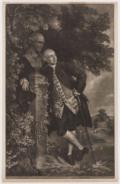 Joseph R. Roach, Sterling Professor of Theater and English
Joseph R. Roach, Sterling Professor of Theater and English
“The God of Our Idolatry”: Garrick and Shakespeare, showed off the extraordinary contribution the actor David Garrick, arguably the eighteenth century’s greatest man of the theatre, made to the age’s understanding of Shakespeare. Displaying printed texts, manuscript letters, drawings, prints, and portraits, the exhibition illustrated how, on stage and off, Garrick influenced the public’s view of Shakespeare, inspiring what Bernard Shaw later called “bardolatry.”
This exhibition was presented in connection with Shakespeare at Yale, a semester of events celebrating the Bard.
Sacred Satire: Lampooning Religious Belief in Eighteenth-Century Britain
September 22, 2011 - March 2, 2012
Curated by
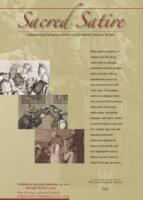 Misty Anderson, Associate Professor of English, University of Tennessee
Misty Anderson, Associate Professor of English, University of Tennessee
and
Cynthia Roman, Curator of Prints, Drawings, and Paintings, the Lewis Walpole Library
Religious beliefs and practices provided ample subject matter for the irreverent printmakers producing graphic satire in eighteenth-century Britain. While clerical satire is an ancient mode, eighteenth-century British artists seized on it with fresh vigor. Satirists appropriated centuries-old themes like corruption, hypocrisy, and greed, but updated them with contemporary concerns about the role of religion in the age of enlightenments. The visual rhetoric of these prints illustrates some of the ways in which eighteenth-century Britons were renegotiating their relationship to religious practice and belief.
The prints in this exhibition reflect a tension between a vision of religion as part of traditional life and the emergence of modern Christianity as a collection of new movements, practices, and ideas about belief. The eighteenth-century images on display preserve for us a moment in an ongoing conversation about the relationship of religion, representation, and modernity.
Illustrious Heads: Portrait Prints as History
November 22, 2010 - September 7, 2011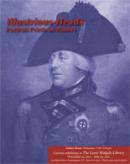
curated by
Cynthia Roman
Engraved “heads,” or portrait prints, in close alliance with literary history and biography, carried substantial power as expressions of political and social preoccupations in eighteenth-century England. Published for both book illustration and independent issue, with and without text, portrait prints recorded and articulated a national past that was conceived as the “portraiture” of illustrious historical persons—a visual and literary representation of a sequence of notable individuals—rather than as a narrative representation of a series of significant political, diplomatic, or military events. Additionally, straight portraits—and increasingly caricatures—of contemporary persons played a vital role in negotiating topical political and social issues and documenting the surrounding discourse for posterity. The prints selected for this exhibition suggest the variety of portrait and caricature publications and present some of the diverse ways in which they were considered as repositories of history, biography, and anecdote. The exhibition also explores the engagement of eighteenth-century audiences with questions of sitter classification, authenticity, provenance, and scarcity.
Collection Highlights: Prints, Drawings, and Illustrated Books
May 3, 2010 - October 29, 2010
curated by
Cynthia Roman
Horace Walpole’s Strawberry Hill
October 15, 2009, - January 3, 2010
Yale Center for British Art, New Haven
March 6 - July 4, 2010 Victoria and Albert Museum, London
Organized by The Lewis Walpole Library, the Yale Center for British Art, and the V&A
The exhibition catalogue was awarded the 2012 Philip Johnson Exhibition Catalogue Award by the Society of Architectural Historians
Works of Genius: Amateur Artists in Walpole’s Circle
September 28, 2009 - March 19, 2010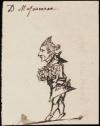
curated by
Cynthia Roman
An influential writer, collector and historian of art, Horace Walpole (1717-1797) was also a great champion of art produced by persons who were ‘not artists’—perhaps best translated today as non-professional or amateur artists.
Works by amateur artists were a vital part of Walpole’s collection and were hung prominently and in great number at his famous house Strawberry Hill. This exhibition presented work on paper by Walpole and members of his closest circle, including Henry William Bunbury, John Chute, Richard Bentley, Lady Diana Beauclerk, Lady Hamilton, and Mary Berry.
French Liberty. British Slavery. British Responses to the French Revolution
April 17 - August 28, 2009
Portraits of Painters: Drawings by George Vertue and Horace Walpole’s Anecdotes of Painting in England
September 2008-February 2009
Recent Acquisitions 2003-2007: Selected Books, Manuscripts, & Works on Paper
November-April 2008
Antiquaries and Connoisseurs in Eighteenth-Century Satiric Prints
October 7, 2004 - May 11, 2005
Painted and Printed Color in Eighteenth-Century Satire
May 12 - October 6, 2004
Matrimony and Metaphor
October 29, 2003 - May 12, 2004
Preposterous Headdresses and Feathered Ladies
May 8 - October 29, 2003
The Train to the Eighteenth Century
Fall 2002
Treasure House in Farmington: The Lewis Walpole Library
October 15, 1999 through January 9, 2000,Yale Center for British Art
The Bewigged Bard: Horace Walpole’s Shakespeare
Exhibition from the Lewis Walpole Library Collection for the Bicentenary of Walpole’s Death
August through October 1997, Sterling Memorial Library, New Haven
“Among the Whores and Thieves”: William Hogarth and The Beggar’s Opera
February 1 - April 6, 1997, Yale Center for British Art
Jointly presented by the Yale Center for British Art and the Lewis Walpole Library
Associated programming:
Nov 16 LWL-Farmington Libraries Talk at the Lewis Walpole Library: ”The Paradox of Pearls: Accessorizing Identities in the Eighteenth Century”with exhibition curator Laura Engel, Duquesne University. Details and link to register.
